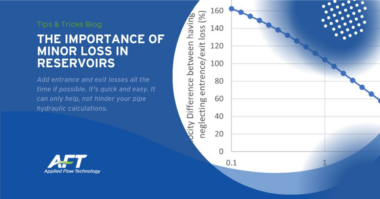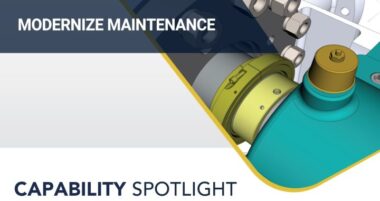Across the industry, professionals are constantly working to develop and implement the latest in pump and valve technology. Recently, EmpoweringPumps.com has been taking on the topics of sustainability and new advancements. But for those who need a brush up on pump basics, we thought it would be a good time to discuss the differences between centrifugal and positive displacement pumps.
How do Centrifugal and Positive Displacement Pumps Work?
Nearly all pumps fall within these two categories, with centrifugal being the most common. However, positive displacement pumps come in a wider variety such as gear, lobe, peristaltic, screw, and many other types of pumps.
The most common type among centrifugal pump is the radial flow pump. These centrifugal pumps use a rotating impeller to create a vacuum in order to move fluid. The pump’s impeller rotates within the housing and reduces pressure at the inlet. This motion then drives fluid to the outside of the pump’s housing, which increases the pressure enough to send it out the discharge.
There is also the axial flow centrifugal pump which uses a curved propeller-shaped impeller, whereas the impeller on a radial flow centrifugal pump looks more like a fan. Axial flow pumps move fluid by drawing fluid into their axis and using the impeller to send fluid out on the other side of the pump.
Positive displacement pumps draw fluid into a compartment at the inlet and move it to an outlet for discharge, most typically using a rotary, reciprocating, or diaphragm method to move fluid. The main difference between these types of pumps and centrifugal is that positive displacement pumps will move fluid at the same speed regardless of the pressure on the inlet end and centrifugal pumps will not.
Which Pumps Are Used in The Upstream Oil and Gas Industry?
Both of these types of pumps are essential components in the oil and gas industry. They are commonly used as part of tri-phase or multiphase pumping applications in which two or more types of pumps are used to accommodate all fluids, a process that offers reduced equipment costs, simpler installation, improved production, and a smaller footprint.
Centrifugal Pumps Used in The Oil and Gas Industry
- Electric Submersible Pump (ESP) – These pumps are typically submerged entirely in the fluid to be pumped and are specifically designed to combat pump cavitation. Instead of pulling fluids, the mechanisms in these pumps push fluids, making them far more reliable and efficient than previously utilized jet pumps. Newer ESP models can also include a water and oil separator which permits water to be re-injected into the reservoir without the need to lift it to the surface, saving both time and operating costs.
- Helico-Axial Pump – Also called a Poseidon pump, this centrifugal pump uses multiple stages of impellers and vanes to move fluids. Compression is accomplished with the transfer of kinetic energy from the rotating impeller blades through circles of guide vanes in order to move fluid. This pump is often used in offshore and deep water developments.
- Deep Well Pump – The industry is beginning to lean more towards these types of pumps especially the deep well seawater lifting and fire pumps. They can have capacities of up to 2,600 cubic meters and offer added safety protection for offshore production. Many of these pumps use radial-designed impellers for smaller capacities and a semi-radial design for larger capacities, which can result in an MTBR of 25,000 hours or more.
Positive Displacement Pumps Used in The Oil and Gas Industry
- Progressive Cavity Pump – Also known as eccentric screw or single screw pumps, these types of pumps are utilized for their ability to transfer difficult liquids, such as those that containing solids or highly viscous fluids. They work by using a single screw or rotor inside a double-threaded rubber stator to build pressure and move fluid. They are mostly used in shallow wells or at the surface.
- Twin Screw Pump – This pump works by rotating to form chambers with the intermeshing of the two screws inside the pump housing. The chambers fill with fluid and move it from the suction side to the higher pressure discharge side of the pump, a process that can be reversed in some twin screw pumps. They can handle virtually any non-homogeneous fluid with any of abrasiveness, lubricity, and viscosity. Twin pumps are most often used in situations that contain high gas volume fractions and fluctuating inlet conditions.
Other Pumps Used in The Oil and Gas Industry
- Deep Well Submersible Pump – Just what it sounds like, this vertical is submerged in deep waters for the purpose of performing a number of upstream processes. The unit is oil-filled, which allows it to be reliable and long lasting while offering reduced cost in total life cycle. It operates with the use of heavy-duty impellers, dual bearings, and multiple seal options. In addition, these pumps can handle flows of up to 6,000 cubed meters, heads to 800 meters, and speeds up to 3,600 rpm.
- Chemical Process Pump – These pumps are used in the handling of harmful chemicals in many industries, including upstream oil and gas. They can convey hazardous or corrosive chemicals efficiently in order to avoid any damage occurring at the working place whether to equipment or personnel. The chemical process pump uses a combination of close coupling, heavy duty casing, specialty impellers, a sealed chamber, and other mechanisms to remove the harmful chemicals.
- Oil Skimmer Aluminum Lobe – These rotary lobe pumps can be used upstream, midstream, and downstream. The pump is lightweight, compact, has a large flow range, dry run capabilities, and conveys highly viscous fluids.
- Multiple Screw Pump Line – One of the newest introductions into the global markets, this Multiple Screw Pump Line includes double, geared-twin, and triple screw pumps. It offers ranges to 2500 gpm / 1160 psi. It can also handle high and low viscosities, as well as lubricating and non-lubricating liquids.
And these are just some of the pumps used in the industry…
https://empoweringpumps.com/screw-pump-basics/





Great summary! Thanks. How about AODD pumps (Wilden). I see a lot of these in midstream processing applications. Positive Displacement, but the pressure / flow curve in their literature looks more like a centrifugal pump curve. Can you explain why the curve is not nearly vertical like many other PDP’s? Thanks, Dave Kowalski.
Thank you David! I plan to cover specific types of both Centrifugal and Positive Displacement Pumps in this series… In the meantime, we do have a nice collection of Wilden articles on the site to keep you busy: https://empoweringpumps.com/tag/wilden/
[…] Article by: Charli K. Matthews This article was previously published on EmpoweringPumps.com […]
can i use PD pumps for transferring diesel oil
Comment:Thanks for good explanation of the differences between centrifugal pump & postive displacement pump
what type of pump is used to transfer LSHS (Low sulphur Heavy Stock) oil from 30 meter from ground and 12 meter height and
Heloo to everyone!
Can we use centrifugal pump for viscous material?plz answer me
Very Useful Information put forth in a simple and easy to understnd manner. The field of pumps and pumping technology is a vast and constant expanding one. There is a specific type of pump for almost every application. It is good to have a broad understanding of each type and category.
It was an amazing blogs keep sharing the new posts
Thank you for this attractive and informative blog. This content is about differences-centrifugal-pumps-vs-positive-displacement-pumps. and I am learning about Hose pump from your blog and Antlia works.
Great content thank you for sharing with us and I have learned many things about diaphragm pump from this article. This is really good.